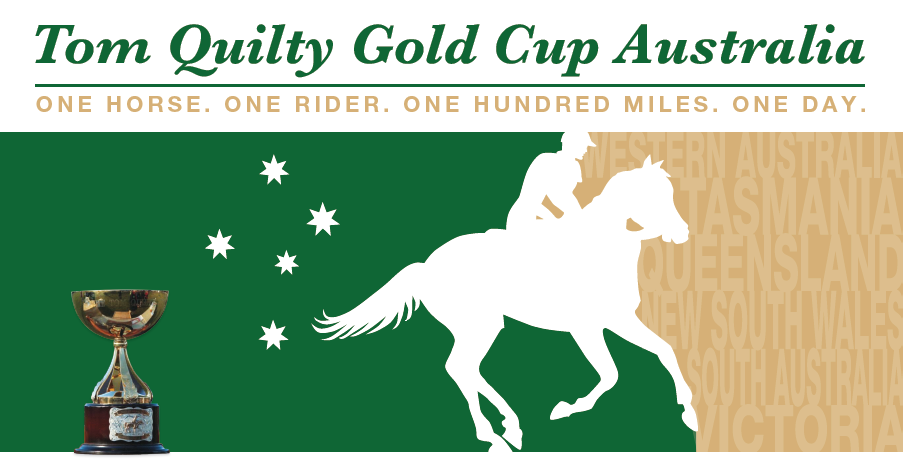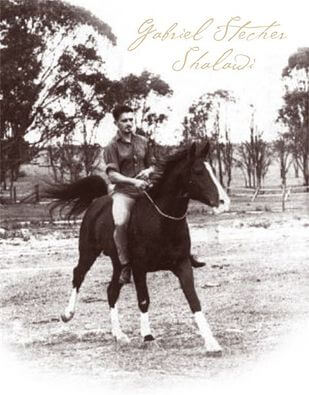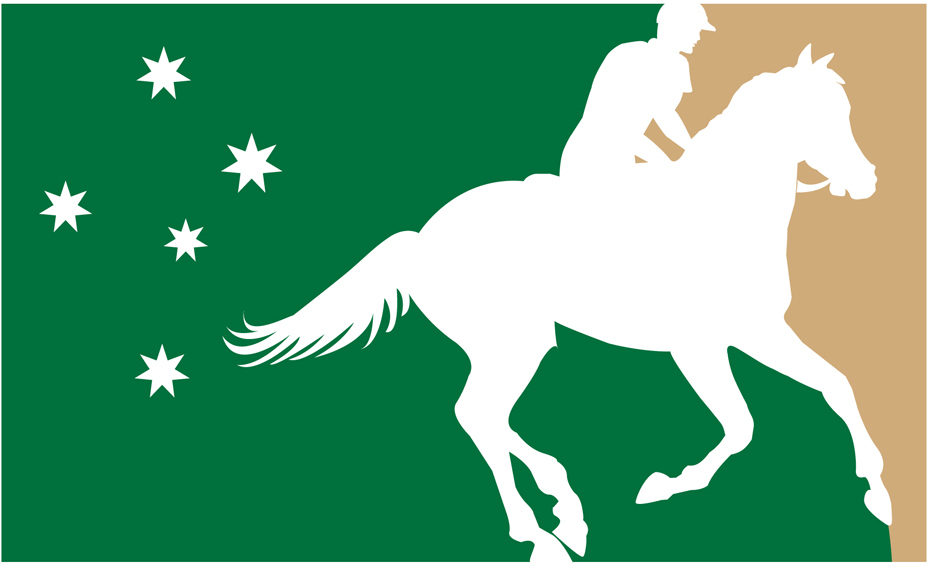
Endurance riding has been an organised sport in Australia since 1966. Reports of the Tevis Cup endurance ride in the USA began reaching Australia. One person inspired by the concept of a long distance competitive horse ride was R. M. Williams, editor of Hoofs and Horns, a pioneer horse magazine in this country. It had a wide circulation and printed stories and reports of the Tevis Cup. An invitation was extended through the magazine for people interested in conducting Australia’s own 100 miles in one day ride, to attend a meeting at the Australia Hotel, Sydney on Tuesday 5th April, 1966 to discuss the possibility of organising such a ride in Australia.
Twenty-three people attended to consider two submissions, one from the Mallee district of Victoria and the other from the Hawkesbury district, near Sydney, New South Wales. History shows that the Sydney offer was accepted, being a relatively central, scenic location, with the support of the University of Sydney’s Rural Veterinary Centre, Camden. A committee was formed to organise the first 100 mile ride, modelled on the successful Tevis Cup ride in the USA.
Despite much opposition from animal rights groups and the Royal Society for the Prevention of Cruelty to Animals, the event went ahead, thanks largely to the strong support from Professor David Hutchins. His professional standing was so high that the RSPCA could not engage a veterinarian who would oppose him. Professor Hutchins based the veterinary standards for the conduct of the ride on those used by the Tevis Cup, plus the results of some practical work done by two of his final year veterinary students. Horses in training for the ride were ridden over set distances and times, to help determine suitable veterinary standards. These results confirmed the standards being used in the American rides of the time. It was mandatory that the strictest of veterinary controls be applied to the ride, in the best interests of the horses, in order to show the budding sport as a professionally run event, and not an exercise in cruelty.
R. M. Williams wrote to his friend Tom Quilty, a great horseman and cattleman in the Kimberly area of Western Australia. Williams asked for his support for the 100 miles ride, and Quilty donated $1000. This was used to make a gold cup, the prize for the winner of the event. This is a perpetual trophy, and the ride was named the Tom Quilty Gold Cup in his honour. The original Gold Cup now resides in the Stockman’s Hall of Fame, in Longreach, Queensland.
Cash prizes were originally offered as incentive for competitors, however, at the last minute it was pointed out that local by-laws prohibited racing for money, over public roads. A meeting of riders and officials was held, and all resolved to ride for the satisfaction of simply participating, and for the honour of wearing the handsome silver Quilty buckle. The Quilty buckle is still a highly regarded prize. Endurance riding in Australia continues to be an amateur sport, with no provision for prize money.
The winner of the first Quilty was Gabriel Stecher (pictured below), an engineer from Victoria, who rode his Arabian stallion ‘Shalawi’ bareback the full 100 miles, plus a few more miles when he took a wrong turn! Several riders retired their horses, when they felt them too tired to continue, but there were no major veterinary problems. The first Quilty was declared a success, and the following day, plans were made to form an Australian Endurance Riders Association, to devise a set of rules and adopt the veterinary standards as advised by Professor Hutchins and his assistant Bob Rawlinson.
The Quilty was considered as the National endurance ride, with its location being fairly central for riders, except for those in Western Australia. In 1986, a referendum of all endurance riders in Australia resulted in the decision to move the Quilty from state to state in rotation. This gave endurance riders in each of the six states to have the chance to compete in the Quilty in their home state, and not have to travel large distances to compete.

Tom Quilty

Gabriel Stecher and Shalawi - winners of the first Tom Quilty
Pat Slater Cup

Pat Slater was passionate about Arabian horses, and in particular the endurance horse. She was forever in awe of their beauty and athleticism.
Australian Endurance owes a huge debt of thanks to Pat for her promotion of the endurance horse. She was instrumental in bringing Australian Endurance Riding to the attention of the uninitiated whilst she was the editor of the Australian Arabian Horse News. Pat was made a life member of AERA, before she died in March 2003.
When Pat became editor of the AHN in 1984 the magazine mainly focused on Arabians for show. Not much was said about the endurance horse. It was a comparatively new sport and rather a motley bunch of Arabian types took part. Although there were some great horses most were either show rejects or an assortment of unlikely looking part-breeds. Pat gradually introduced stories about Endurance horses and bit by bit they were accepted and deemed fit for publication!
Today endurance horses are written about constantly in the magazine and the AHSA recognise their major achievements. Each year the Society donates kersey rugs to the winners of each division of the Tom Quilty National Championship Ride.
Superior performances by an endurance horse are also recognised by the Society. Photographs of endurance horses have even appeared on the cover of the AHN!
But the biggest breakthrough came about in 2007 when the AHSA declared multi medal winning endurance horse Bremervale Justice the Ambassador for the breed. Pat would be thrilled to know that the endurance horse is now completely accepted within the Society.
Pat was the editor of the AHN for eight years and in that time she also edited two volumes of The Arabian Horse in Australia (and New Zealand). In 1992 Pat was awarded an Honorary Life Membership of the AHSA Ltd for her outstanding promotional contribution to the Arabian breed.
In her own right Pat was an outstanding horse photographer. She had a great eye for a horse and belonged to the pre-digital age when skill with a camera was more important than technology. Many of Pats’ photographs are still used in today’s publications, and will be for many years to come.
Pat photographed at her first Quilty in 1988. In 1994 she attended her first World Equestrian Games at The Hague in Holland. She was also in attendance at two other WEGS: Dubai in 1988 and Spain in 2002. She came with us to Spain in spite of being really unwell and took some wonderful photographs. Her stoicism and unfailing sense of humour will be remembered by all who were there with her. She would have made one hell of an endurance rider!
The Pat Slater Trophy was born to commemorate this great lady of Endurance. The sterling silver perpetual cup was originally donated by Peter Slater and Family; Penny, Alexandra and Peter Toft; Sue and Toby Crockett; Meg Wade and Chris Gates. The Pat Slater Trophy is now sponsored by the state divisions of the A.E.R.A.
It is awarded each year (since 2004) at the Tom Quilty 160 kilometre National Championship ride and each year the winner is given a replica of the Pat Slater Cup. The winner of the Pat Slater Cup will be selected from the first ten horses to successfully complete the course, regardless of their riding Division. Eligible horses must not receive any invasive treatment from the commencement of the Quilty until the completion of the judging of the Pat Slater Cup.
That the winner of the Pat Slater Cup is to be decided by a panel of five persons appointed by the AERA Inc. The appointed judges must have an extensive knowledge of the sport. A member of the panel may have been a current participant, provided the horse is not eligible for consideration for this award and there is no perceived conflict of interest.
The panel, in judging this event, will take into consideration ride performance, conformation and overall presentation. The ten horses will parade as a group to trot and canter a large circle together. They will then be required to individually trot up in hand, unsaddled. Emphasis will be placed on impulsion and the attitude of the horse. Little or no consideration will be taken for overall weight carried and time taken in comparison with the winner’s time.
Past Quilties
- 2023 Imbil, Qld Results
- 2022 Tooraweenah, NSW Results
- 2021 Collie, Western Australia Results
- 2020 Postponed due to Covid-19
- 2019 Imbil, Queensland Archive | Results
- 2018 Scottsdale, Tasmania Results
- 2017 Wirrina Cove, South Australia Archive | Results
- 2016 Lexton, Victoria Results
- 2015 Hawkesbury, New South Wales Results
- 2014 Western Australia Results
- 2013 Kilkivan, Queensland Results
- 2012 St. Helens, Tasmania Archive | Results
- 2011 Mt. Pleasant, South Australia Archive | Results
- 2010 Manilla, New South Wales Archive | Results
- 2009 Tonimbuk, Victoria Archive | Results
- 2008 Nanango, Queensland Archive | Results
- 2007 Collie, Western Australia Results
- 2006 Boonah, Queensland Archive | Results
- 2005 Sheffield, Tasmanian Archive | Results
- 2004 Port Elliot, South Australia Archive | Results
- 2003 Canowindra, New South Wales Results
- 2002 Landsborough, Victoria Results
- 2001 Mundijon, Western Australia Archive | Results
- 2000 Boonah, Queensland Results
- 1999 Deloraine, Tasmania Archive | Results
- 1998 Mt. Pleasant, South Australia Archive | Results
- 1997 Watagan Mt., New South Wales Archive | Results
- 1996 Myrtleford, Victoria Archive | Results
- 1995 Toodyay, Western Australia Archive | Results
- 1994 Kenilworth, Queensland Archive | Results
- 1993 Sheffield, Tasmania Archive | Results
- 1992 Mt. Pleasant, South Australia Archive | Results
- 1991 Tooraweenah, New South Wales Archive | Results
- 1990 Myrtleford, Victoria Archive | Results
- 1989 Mornington Hills, Western Australia Results
- 1988 Kenilworth, Queensland Archive
- 1987 Sheffield, Tasmania Archive | Results
- 1986 Gawler, South Australia Archive
- 1985 Colo, New South Wales Archive | Results
- 1984 Colo, New South Wales Archive | Results
- 1983 Colo, New South Wales Archive | Results
- 1982 Colo, New South Wales Archive | Results
- 1981 Colo, New South Wales Archive | Results
- 1980 Colo, New South Wales Archive | Results
- 1979 Wilberforce, New South Wales Archive | Results
- 1978 Wilberforce, New South Wales Archive | Results
- 1977 Wilberforce, New South Wales Archive | Results
- 1976 Wilberforce, New South Wales Archive | Results
- 1975 Wilberforce, New South Wales Archive | Results
- 1974 Wilberforce, New South Wales Results
- 1973 Wilberforce, New South Wales Results
- 1972 Wilberforce, New South Wales Results
- 1971 Wilberforce, New South Wales Results
- 1970 Richmond, New South Wales Results
- 1969 Richmond, New South Wales Results | Master Sheet
- 1968 Richmond, New South Wales Results | Master Sheet
- 1967 Richmond, New South Wales Results | Master Sheet
- 1966 Richmond, New South Wales Archive | Results | Master Sheet

